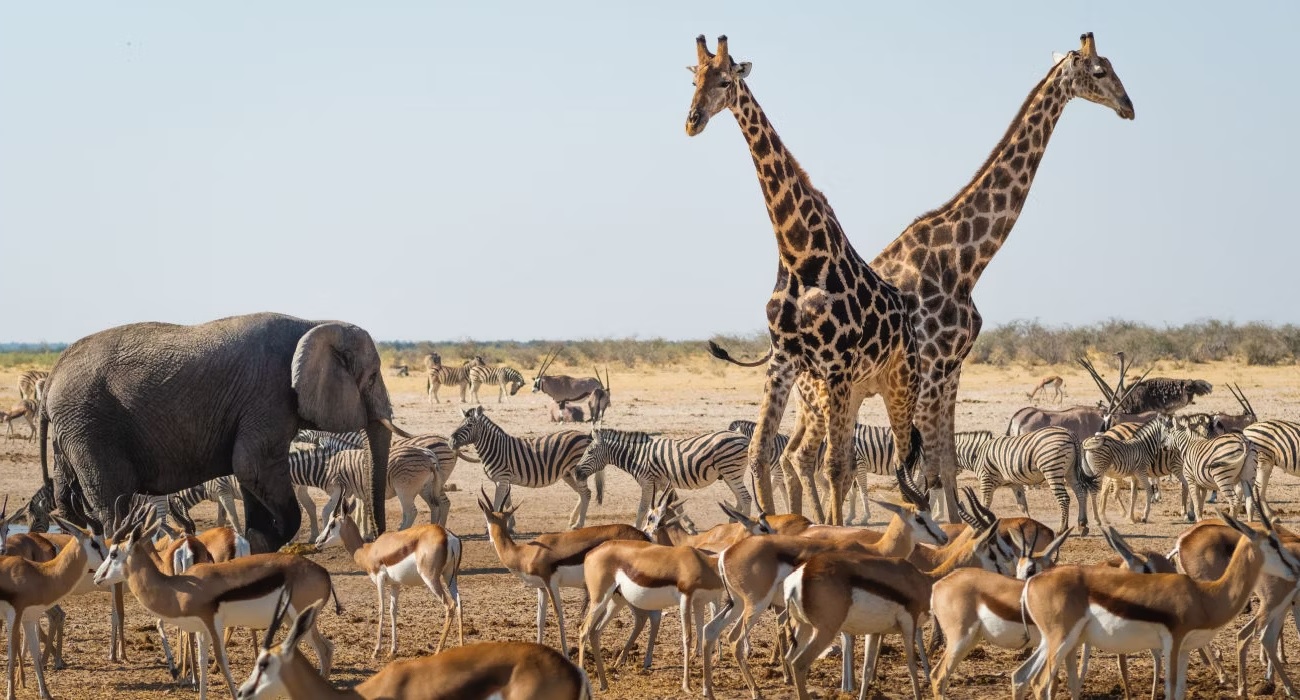
Africa is home to some of the most incredible wildlife on Earth. From the towering giraffes to the stealthy leopards, the continent's biodiversity is truly astounding. Did you know that African elephants are the largest land animals on the planet? Or that cheetahs can sprint up to 70 miles per hour, making them the fastest land animals? These fascinating creatures not only captivate our imaginations but also play crucial roles in their ecosystems. In this post, we'll dive into 31 amazing facts about African animals that will leave you in awe. Get ready to learn about the unique behaviors, habitats, and survival strategies of these remarkable species.
The Majestic African Elephant
African elephants are the largest land animals on Earth. Their sheer size and intelligence make them fascinating creatures.
- Elephant Herds: Female elephants, known as cows, live in tight-knit herds led by the oldest female, called the matriarch. These herds can include up to 100 members.
- Communication: Elephants communicate through a series of low-frequency sounds called infrasound, which can travel up to 10 miles.
- Memory: Known for their incredible memory, elephants can remember locations of water sources and recognize other elephants even after years of separation.
- Tusks: Both male and female African elephants have tusks, which are actually elongated incisor teeth. They use them for digging, stripping bark from trees, and as weapons.
The Speedy Cheetah
Cheetahs are the fastest land animals, capable of reaching speeds up to 70 mph in short bursts covering distances up to 500 meters.
- Acceleration: A cheetah can accelerate from 0 to 60 mph in just a few seconds, faster than most sports cars.
- Spots: Each cheetah has a unique pattern of spots, much like human fingerprints.
- Hunting: Cheetahs rely on their speed to hunt, often chasing down prey in short, intense sprints.
- Cubs: Cheetah cubs have a mantle of long, blue-gray hair on their backs, which helps them blend into tall grass and avoid predators.
The Mighty Lion
Lions are often called the "king of the jungle," though they actually live in savannas and grasslands.
- Prides: Lions live in groups called prides, which can consist of up to 30 lions, including multiple females, their cubs, and a few males.
- Roar: A lion's roar can be heard up to 5 miles away, used to communicate with pride members and ward off rivals.
- Hunting: Female lions do most of the hunting, working together to take down large prey like zebras and wildebeests.
- Manes: Male lions have manes that protect their necks during fights and make them appear larger to intimidate rivals.
The Unique Giraffe
Giraffes are the tallest mammals on Earth, with their long necks and legs making them truly unique.
- Height: An adult giraffe can stand up to 18 feet tall, with their necks alone being about 6 feet long.
- Tongue: Giraffes have a prehensile tongue that can be up to 20 inches long, helping them grasp leaves from tall trees.
- Heart: A giraffe's heart can weigh up to 25 pounds and generate double the blood pressure of other large mammals to pump blood up their long necks.
- Spots: Each giraffe has a unique pattern of spots, which helps with camouflage and temperature regulation.
The Elusive Leopard
Leopards are known for their stealth and ability to adapt to various habitats, from rainforests to deserts.
- Climbing: Leopards are excellent climbers, often dragging their prey up trees to keep it safe from scavengers.
- Solitary: Unlike lions, leopards are solitary animals, coming together only to mate.
- Camouflage: Their spotted coats provide excellent camouflage, allowing them to blend into their surroundings and ambush prey.
- Night Hunters: Leopards are primarily nocturnal, using their keen night vision to hunt in the dark.
The Playful Meerkat
Meerkats are small, social mammals known for their playful behavior and upright stance.
- Colonies: Meerkats live in colonies called mobs or gangs, which can consist of up to 50 members.
- Sentries: One meerkat often stands guard while others forage, alerting the group to danger with a series of calls.
- Diet: Meerkats are omnivores, eating insects, small mammals, and plants.
- Burrows: They live in complex burrow systems with multiple entrances and chambers, providing protection from predators and harsh weather.
The Graceful Gazelle
Gazelles are known for their grace and speed, often seen bounding across the African plains.
- Speed: Gazelles can run at speeds of up to 60 mph, using their agility to evade predators.
- Herds: They live in herds that can range from a few individuals to several hundred, providing safety in numbers.
- Leaping: Gazelles perform a behavior called stotting or pronking, where they leap into the air with all four feet off the ground, possibly to show strength and deter predators.
- Diet: They are herbivores, feeding on grasses, leaves, and shoots.
The Intelligent Chimpanzee
Chimpanzees share about 98% of their DNA with humans, making them our closest living relatives.
- Tool Use: Chimpanzees are known for using tools, such as sticks to extract termites from mounds or stones to crack open nuts.
- Social Structure: They live in communities of up to 150 individuals, with complex social hierarchies and strong bonds between members.
- Communication: Chimpanzees communicate through a variety of vocalizations, facial expressions, and gestures, displaying a wide range of emotions and intentions.
The Wonders of African Wildlife
African animals are truly fascinating. From the majestic elephants to the speedy cheetahs, each creature has unique traits that make them stand out. These animals play crucial roles in their ecosystems, helping maintain balance. Learning about them not only sparks curiosity but also highlights the importance of conservation efforts.
Protecting these species ensures future generations can marvel at their beauty and learn from their behaviors. Whether it's the mighty lion or the tiny meerkat, every animal has a story worth telling. By understanding and appreciating these facts, we can foster a deeper connection with nature and advocate for its preservation.
So next time you think about African wildlife, remember the incredible diversity and the vital roles these animals play. Let's cherish and protect them for a brighter, more sustainable future.
Was this page helpful?
Our commitment to delivering trustworthy and engaging content is at the heart of what we do. Each fact on our site is contributed by real users like you, bringing a wealth of diverse insights and information. To ensure the highest standards of accuracy and reliability, our dedicated editors meticulously review each submission. This process guarantees that the facts we share are not only fascinating but also credible. Trust in our commitment to quality and authenticity as you explore and learn with us.


